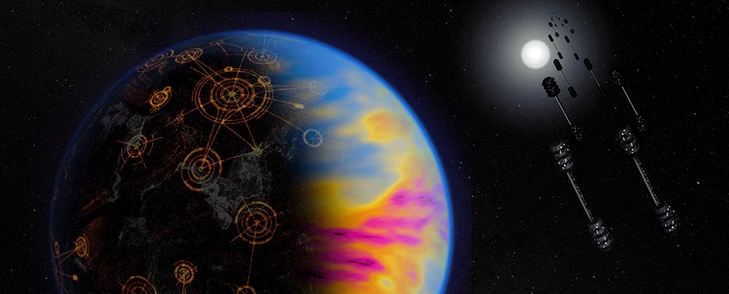As the Universe unfolds itself in front of space telescopes’ eyes, we know that we’ll never understand it nor explore it thoroughly. It’s an enormous place, home of many cosmic features, galaxies, planets, and other worlds yet to be discovered.
The quest for signs of alien life is a non-ending mission. Due to the Universe’s size, scientists are keen to narrow down their search for alien life. But it’s still one of the toughest jobs.
However, a new approach might change that and offer more support in the so-challenging yet so intriguing alien searching mission.
Here is what you need to know.
Alien Pollution: What Should You Know
Just like us, aliens civilizations out there might run industries and perform various activities. And that can produce pollution, too.
A new approach supports quite a bold idea.
Atmospheric pollution is the key
According to a recent study, nitrogen dioxide gas (NO2) could tell us if there’s life on other planets. And that, well, let’s say it might change our whole perspective of alien signs hunting.
NO2 is produced by burning fossil fuels, volcanoes, non-industrial sources, lighting, and other biological stuff.
“Observing NO2 on a habitable planet could potentially indicate the presence of an industrialized civilization,” explained Ravi Kopparapu, an astrobiologist at the NASA Goddard Space Flight Center.

What could be the chances?
On our planet, most of the NO2 comes from our activity. That includes vehicle emissions, fossil-fuelled power plants, and combustion processes.Â
The existence of NO2, also known as a technosignature, would take us closer to our goal. The new approach doesn’t involve any observing yet, but the scientists have utilized computer models.Â
These models can tell us what a NO2 technosignature would look like, and if our current technology would detect it.
The James Webb Space Telescope, for instance, would need approximately 400 hours of observing at a length of 30 light-years to see any Earth-like planets close to a Sun-like star. So, chances are pretty positive. Time, however, is something that we can’t hurry.
Future technology and space instruments will indeed offer us the data we need, but we’ll need to wait for a significant amount of time. Until then, the current NO2 approach has to be further investigated.













Leave a Reply